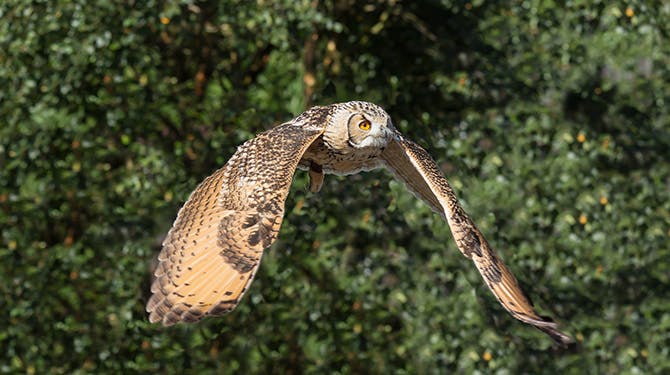From colour-changing chameleons to dangling bats and soaring birds, Explanatorium of Nature explains it all.
When it comes to the animal kingdom, sometimes truth is stranger than fiction! We’ve gathered the answers to some common questions about extraordinary animal behaviour. Explanatorium of Nature is here to explain how all of it works, from colour-changing chameleons to dangling bats and soaring birds.
Get ready for some eye-opening explanations!
How do chameleons change colour?
Chameleons can’t change their colour to match any background, but they can alter it a little to blend in with their surroundings. They also change their colour to attract mates, intimidate rivals, indicate mood and more! So how do they do it?

Just below a chameleon’s skin are cells containing yellow pigments. Beneath these lie a layer of cells that contain crystals separated by fluid. When the crystals are close together, blue light is reflected, which can be altered to green by the yellow layer.

If the crystals are apart, the chameleon can appear red, orange or yellow. The yellow layer can change how much it alters the colour. A chameleon’s colour depends on how the different skin layers interact!

How do birds fly?
Birds are excellent fliers, with massive flight muscles that make up at least a quarter of their entire body weight. Their skeletons are extremely light so as not to impede flight, but strong enough to withstand the impact of flying. So how do they do all that flying in the first place?

Birds flap their wings to generate the two forces necessary for flight: thrust and lift. By flapping their wings, birds push themselves forwards and produce the thrust that counteracts drag, or air resistance. Once the bird is airborne, lift is created by the stream of air that pushes over the curved surfaces of the bird’s outstretched wings.

This diagram shows how the angle and shape of a bird's wing diverts flowing air as the bird glides, creating a pressure difference that creates the upwards force of lift.

How do bats sleep upside down?
Bats are the only mammals capable of flight. Their wings consist of elastic skin stretched between hugely elongated finger bones, connected by many joints. These flexible, manoeuvrable limbs are very different from the feathery wings of birds. So how do bats’ unique bodies help them to hang upside down?

A bat spends its day roosting, hanging upside down from a high perch so it can easily get airborne. The weight of its body pulls tendons attached to its claws, causing them to clench. The bat only has to exert energy to release its grip!

For the answers behind more incredible natural marvels, discover Explanatorium of Nature.














